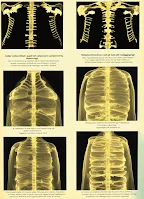OUR HEALTH AND AIRBORNE DISEASE
Airborne Disease Awareness: Preserving Health and Wellness.
Airborne diseases are illnesses caused by pathogens (such as bacteria, viruses, or fungi) that can be transmitted through the air. In our interconnected world, the threat of airborne diseases looms large, presenting a significant challenge to public health and wellness. These pathogens can remain suspended in the air for extended periods of time and can infect individuals who inhale them. Common examples of airborne diseases include influenza, tuberculosis, measles, and COVID-19. Transmission of airborne diseases typically occurs through respiratory droplets expelled when an infected person coughs, sneezes, talks, or breathes. These droplets can contain infectious agents and may be inhaled by others who are nearby. In some cases, airborne pathogens can also be transmitted through aerosols, which are smaller particles that can remain suspended in the air for longer periods and travel further distances.
Some causes of Airborne disease:
Pathogens: Airborne diseases are caused by microorganisms such as bacteria, viruses, and fungi.
Respiratory Droplets: Transmission occurs when infected individuals cough, sneeze, or speak, releasing respiratory droplets containing pathogens into the air.
Aerosols: Some pathogens can also form aerosols, smaller particles that can remain suspended in the air for extended periods and travel further distances.
Influenza Virus: Causes seasonal flu outbreaks, characterized by fever, cough, sore throat, and muscle aches.
Mycobacterium tuberculosis: Responsible for tuberculosis (TB), a bacterial infection that primarily affects the lungs and can cause coughing, chest pain, and fatigue.
SARS-CoV-2: The virus responsible for COVID-19, which can lead to fever, cough, shortness of breath, loss of taste or smell, and other respiratory symptoms.
Airborne Spread: Inhalation of respiratory droplets or aerosols containing infectious agents.
Fomite Transmission: Touching surfaces or objects contaminated with pathogens and then touching the face or mouth.
Some symptoms of airborne Disease:
Respiratory Symptoms: Coughing, sneezing, sore throat, nasal congestion, and difficulty breathing.
Fever: Elevated body temperature, often accompanied by chills or sweating.
Fatigue: Feeling tired or lethargic, which may be accompanied by muscle aches or weakness.
Gastrointestinal Symptoms: Nausea, vomiting, diarrhea, or abdominal pain (less common in airborne diseases but can occur in some cases).
Neurological Symptoms: Headache, confusion, or loss of consciousness (less common and more severe in certain airborne diseases).
Incubation Period:
The time between exposure to the infectious agent and the onset of symptoms varies depending on the specific disease.
In other cases, such as tuberculosis, symptoms may not manifest until weeks or even months after infection.
Diagnostic Methods:
Laboratory Testing: Molecular assays, such as polymerase chain reaction (PCR), are commonly used to detect specific pathogens in respiratory samples.
Imaging Studies: Chest X-rays or CT scans may be performed to evaluate lung involvement in diseases like tuberculosis or COVID-19.
Serological Tests: Blood tests can detect antibodies produced by the immune system in response to certain airborne pathogens, aiding in diagnosis and surveillance efforts.
Preventive Measures for airborne disease:
Vaccination: Immunization against airborne diseases like influenza and COVID-19 can reduce the risk of infection andtransmission
Clean and healthy diet:
Contaminated water and improper washed eatables like fruits and vegetables increases the risk of such diseases too. Always take precautions while drinking water and having your meals.
Hand Hygiene: Regular handwashing with soap and water or using alcohol-based hand
sanitizers can help prevent the spread of respiratory infections.
sanitizers can help prevent the spread of respiratory infections.
Respiratory Etiquette: Covering coughs and sneezes with a tissue or elbow, and wearing masks in crowded or high-risk settings can minimize the release of respiratory droplets containing infectious agents.
Contact Tracing: Identifying and monitoring individuals who have been in close contact with confirmed cases to prevent further transmission.
Quarantine and Isolation: Separating individuals who are infected or suspected of
being infected from others to reduce the spread of disease.
being infected from others to reduce the spread of disease.
Public Awareness Campaigns: Educating communities about the signs and symptoms of airborne diseases, as well as preventive measures, promotes early detection and containment efforts.
Airborne disease awareness is essential for preserving health and wellness in our communities. By understanding how these diseases spread and implementing preventive measures, we can reduce the burden of illness and build resilience against future outbreaks. Vaccination, public health measures, surveillance, and rapid response are all critical components of an effective strategy to protect against airborne threats. Together, we can work towards a healthier and more resilient future for all.
Have a nice day. 😊
Some symptom
Respirato Symptoms: Coughing, sneezing, sore thrty breathing.
Fever: Elevated body temperature, often accompanied by chills or sweating.
Fatigue: Feeling tired or lethargic, which may be accompanied by muscle aches or weakness.
Gastrointestinal Symptoms: Nausea, vomiting, diarrhea, or abdominal pain (less common in airborne diseases but can occur in some cases).
Neurological Symptoms: Headache, confusion, or loss of consciousness (less common and more severe in certain airborne diseases).
Incubation Period:
The time between exposure to the infectious agent and the onset of symptoms varies depending on the specific disease.
For some airborne diseases like influenza, symptoms may appear within 1 to 4 days after exposure.
In other cases, such as tuberculosis, symptoms may not manifest until weeks














Comments
Post a Comment